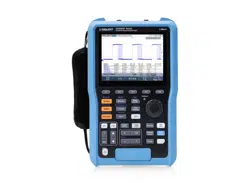Loading ...
Loading ...
Loading ...

SHS800X&SHS1000X User Manual
56
WWW.SIGLENT.COM
Trigger Mode
The SHS800X/SHS1000X’s trigger mode includes auto, normal, single and Force.
Trigger mode affects how the oscilloscope searches for the trigger
After the oscilloscope starts running, the oscilloscope operates by first filling the
pre-trigger buffer. It starts searching for a trigger after the pre-trigger buffer is
filled and continues to flow data through this buffer while it searches for the
trigger. While searching for the trigger, the oscilloscope overflows the pre-trigger
buffer and the first data put into the buffer is first pushed out (First Input First Out,
FIFO).
When a trigger is found, the pre- trigger buffer contains the events that occurred
before the trigger. Then, the oscilloscope fills the post- trigger buffer and
displays the acquisition memory.
Press the Trigger Setup button and Mode softkey to select the desired trigger
mode.
In the Auto trigger mode (the default setting), if the specified trigger
conditions are not found, triggers are forced and acquisitions are made so
hat signal activity is displayed on the oscilloscope.
The
Auto trigger mode is appropriate when:
Checking DC signals or signals with unknown levels or activity.
When trigger conditions occur often enough that forced triggers are
unnecessary.
In the Normal trigger mode, triggers and acquisitions only occur when the
specified trigger conditions are found. Otherwise, the oscilloscope holds the
original waveform and waits for the next trigger.
The Normal trigger mode is appropriate when:
You only want to acquire specific events specified by the trigger settings.
Triggering on an infrequent signal from a serial bus (for example, I2C,
SPI, CAN, LIN, etc.) or another signal that arrives in bursts. The
Normal
trigger mode lets you stabilize the display by preventing the oscilloscope
from auto- triggering.
In the Single trigger mode, the oscilloscope waits for a trigger, displays the
waveform when the trigger condition is met, and stops.
The Single trigger mode is appropriate when:
Loading ...
Loading ...
Loading ...
